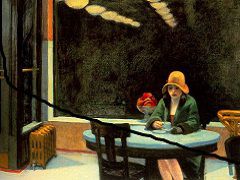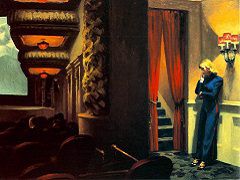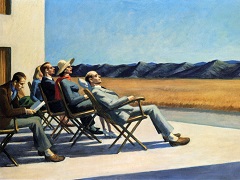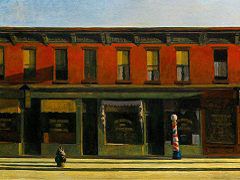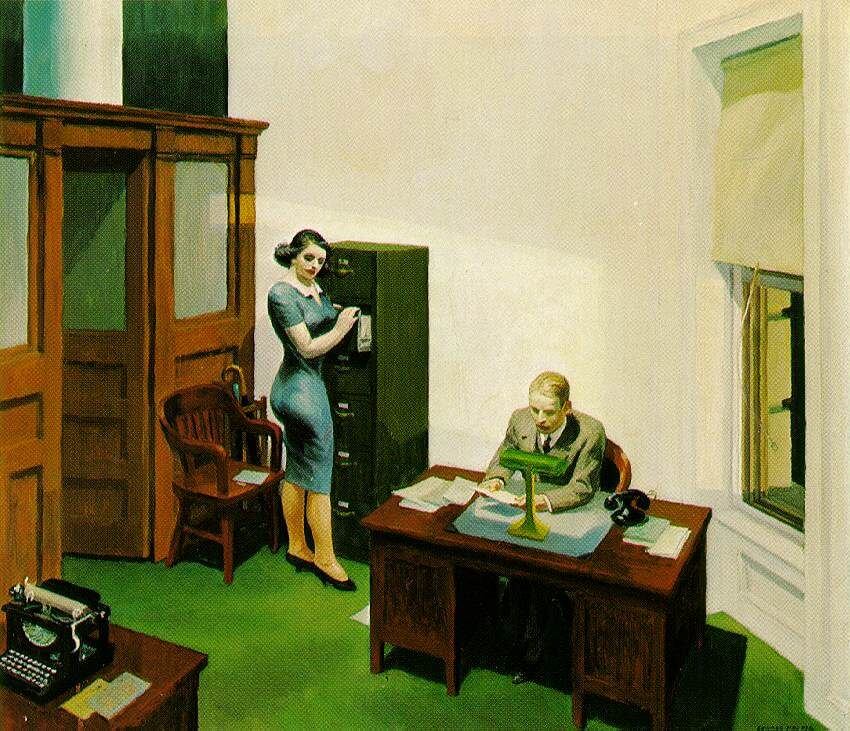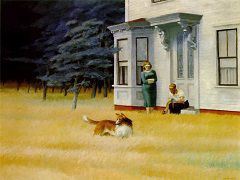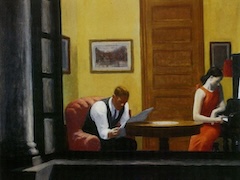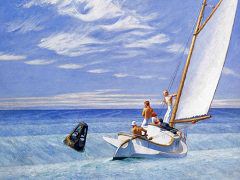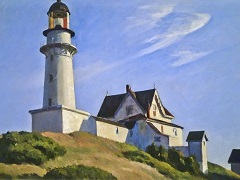Sunlight in a Cafeteria, 1958 by Edward Hopper
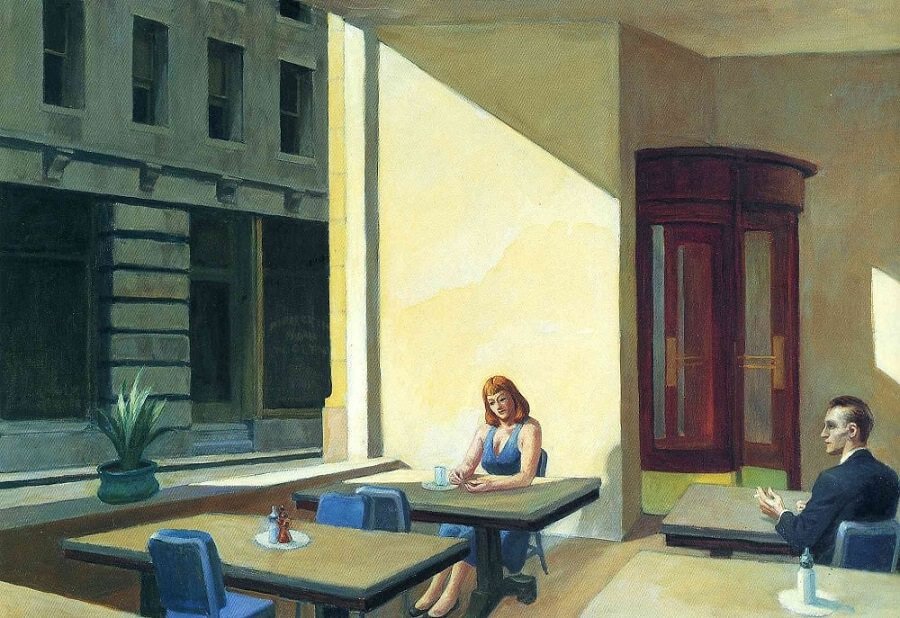
Hopper is a master of subtle allusion. We see a man and woman seated at separate tables in a sunny cafeteria. They are the only customers. What interests the artist is the suspenseful moment before a first tentative contact is made, the mental and emotional forcefield that can arise between two strangers.
In a sense, Sunlight in a Cafeteria represents a reversal of the situation in Nighthawks. Instead of a diner with counterman we see a cafeteria with no one to wait on the customers. Instead of a nocturnal scene with fluorescent light, we have bright daylight. Instead of looking into an interior from out-side, we are inside looking out. Instead of an apparently prominent big-city corner, we are on a quiet side street. But the most important difference lies in the fact that while the night owls have apparently come to the diner together, the two cafeteria guests are strangers. She sits in full sunlight, he in semi-shadow. He turns towards her, but conceals his interest by looking out of the window. She is unable to show her interest even to this extent, not even attempting to catch his eye as if by accident. She might turn inconspicuously towards him, but hesitates and looks down at her hands. This is not going to work. The harsh shadow-line between man and woman will not be overcome unless one of them takes the initiative.


